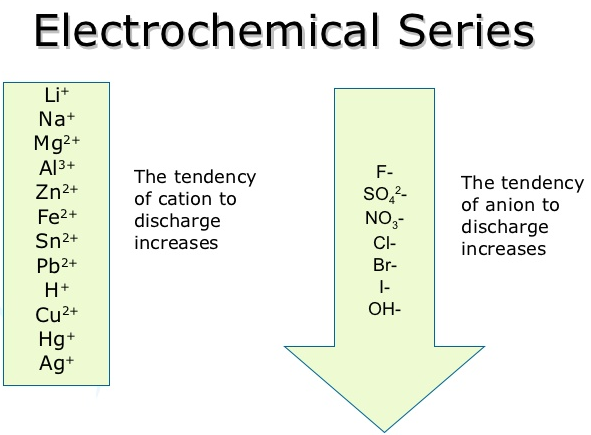

In general, the greater the difference in reactivity between two metals in a displacement reaction, the greater the amount of energy released.Īluminium is much higher than iron in the reactivity series, so the thermite reaction releases a lot of energy. Metal C displaces A but cannot displace B – so it must be more reactive than A but less reactive than B, and be in between them in this reactivity series.Metal B displaces both A and C – so it must be the most reactive and be at the top of this reactivity series.Metal A cannot displace either B or C – so it must be the least reactive and be at the bottom of this reactivity series.When metals react with other substances the metal atoms form positive ions. Reactions between metals and metal oxides allow us to put a selection of metals into a reactivity series. The reactions are oxidation reactions because the metals gain oxygen. The aluminium removes oxygen from the iron(III) oxide:
Metal ion reactivity series series#
The reactivity series of metals is a chart showing metals. A lot of heat is needed to start the reaction (a magnesium fuse is used, which provides heat to the reactants), but then it releases an incredible amount of heat, enough to melt the iron.Īluminium + iron(III) oxide → iron + aluminium oxideĪs aluminium is more reactive than iron, it displaces iron from iron(III) oxide. The reactivity series of metals When metals react with other substances, the metal atoms lose electrons to form positive ions.

It is used to produce white hot molten (liquid) iron in remote locations for welding. The thermite reaction is a good example of this.
Metal ion reactivity series free#
Join Seneca to get 250+ free exam board specfic A Level, GCSE, KS3 & KS2 online courses.A more reactive metal will displace a less reactive metal from a compound. Want to learn more about Reactivity Series? Because of this, the metal has to be extracted from the ore (rock) where the metal compound is found. Most metals are only found as compounds because the metal has reacted with other elements in the past. Most metals react with dilute acids to produce a salt and hydrogen gas. Potassium, sodium and lithium all react quickly with cold water to produce a metal hydroxide and hydrogen gas. Platinum, however, is less reactive than copper and so cannot displace copper from a copper sulfate solution. Magnesium + copper sulfate → magnesium sulfate + copper Magnesium is more reactive than copper, so magnesium can displace copper from a copper sulfate solution to create magnesium sulfate. A displacement reaction happens when a more reactive metal (one that forms positive ions more easily) displaces a less reactive metal from a compound. This is called a displacement reaction.Ī metal can only displace another metal from a compound if it is located above it in the reactivity series. These are called native metals.Ī more reactive metal (one that forms positive ions more easily) can displace a less reactive metal from a compound. Very unreactive metals, such as gold and platinum, are found in the Earth’s crust as pure metals. Metals can be arranged in order of their reactivity. The easier it is for a metal to form its positive ion, the more reactive the metal is. When metals react with other substances, the metal atoms always form positive ions.


 0 kommentar(er)
0 kommentar(er)
